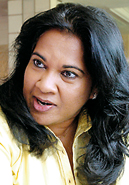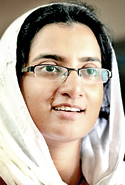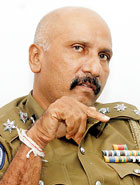A guide to raising a child safely
A new book titled ‘How to Protect Your Child from Injury’ aims to educate parents, paramedics and students of medicine about the very real risks children face. The book’s author, Dr. Wijaya Godakumbura, is best known for his work in designing a safer version of the standard kerosene lamp, but he is also the author of the prize-winning book ‘A Doctor Speaks’ and has demonstrated a lifelong interest in the prevention and treatment of injuries
In the wake of the success enjoyed by The Safe Bottle Lamp Foundation Dr. Godakumbura was invited to attend numerous medical conferences across the world. It was through these that he was made aware of the disparity in how the treatment of diseases and injuries were approached. “I came to know that in most countries, the emphasis was on disease prevention and not injury prevention,” he told the Sunday Times, explaining that this confused him as in many cases the outcomes were as dire. Accordingly, he began his research for a book he hoped to publish for the benefit of the general public.
He very quickly became aware that a child was more likely to sustain an injury than an adult.
He quotes from the World Report on Child Injury and Prevention when he says: “Children live in a world designed for adults, and their curiosity and drive to explore their world are not matched by their capacity to understand danger.” For instance, children may have the physical skill to climb a tree, without the corresponding ability to assess the risks. Out on the road, their size puts them below the line of sight of most drivers.
“There are other similar instances,” says Dr. Godakumbura, “the toddler who crawls to an unprotected well sees his own reflection in the water and may try to touch it. It is easy to imagine what happens next. Like us, they too like to have a dip in a swimming pool, a stream or the sea. So there are many children among those who drown.”
For Dr. Godakumbura, who spent three years at work on the project, this is vital information that must be shared. While he hopes that parents will read this, he’s included graphs and several charts to make the book useful to medical professionals as well. The book covers the most common injuries, namely road traffic accidents, drowning, burns, falls, poisoning, dog bites and snake bites. At the end of every chapter are suggestions on the best ways to prevent such incidents. “Children are not fully aware of the dangers, they have to be guided and the parents have to do that,” says Dr. Godakumbura emphatically.
In some cases of course, adults and the surrounding community must be held responsible.
Young children can drown in as little as two inches of water and have been known to stumble into uncovered wells. Such hazards in the environment must be removed. In addition Dr. Godakumbura emphasises the importance of teaching people to swim, having local authorities remain vigilant about conditions on the beach, and training life guards who know how to go about rescuing someone who is drowning. Medicines and household chemicals should be kept under lock and key at all times to avoid cases of inadvertent poisoning. “Children are good imitators,” he cautions.
For most part, these are simple, common sense suggestions, but parents who may not have considered the risks will be grateful for the good advice.
‘’Protect Your Child From Injury’ is priced at Rs.650 and is published by Sarasavi.
comments powered by Disqus
























